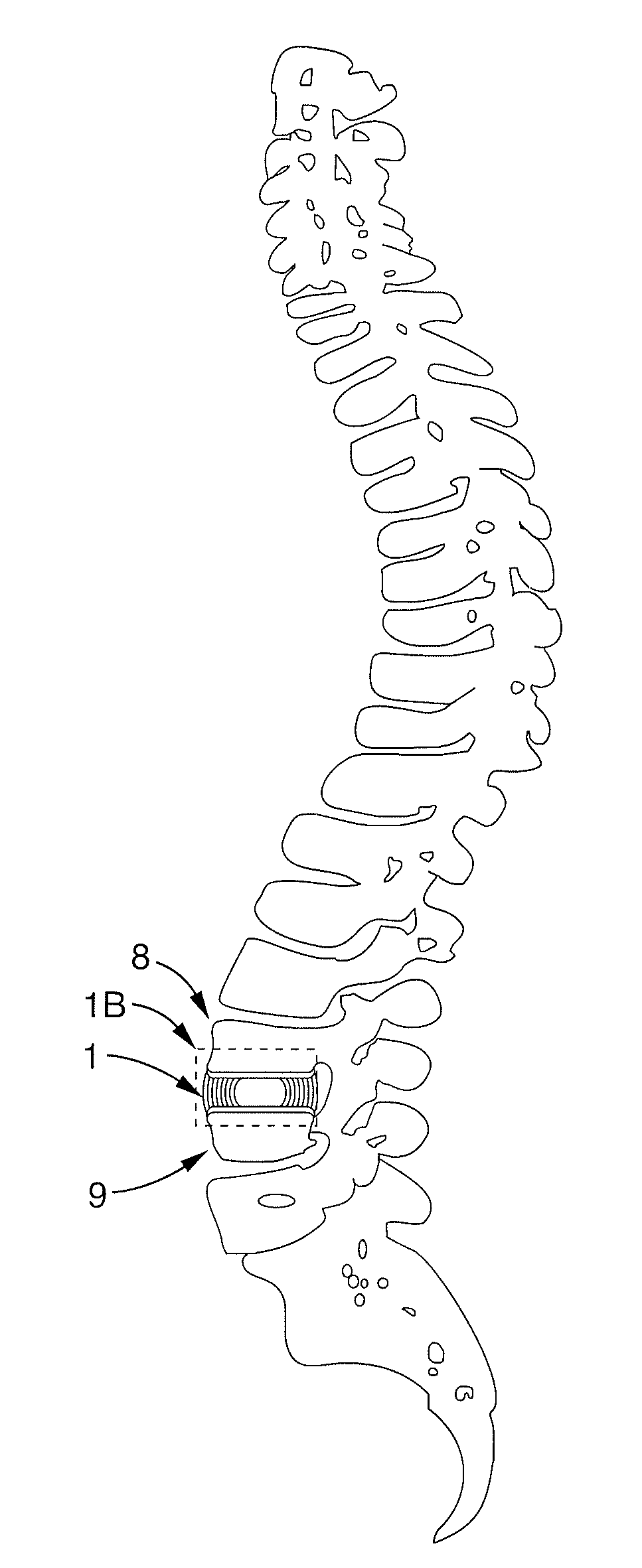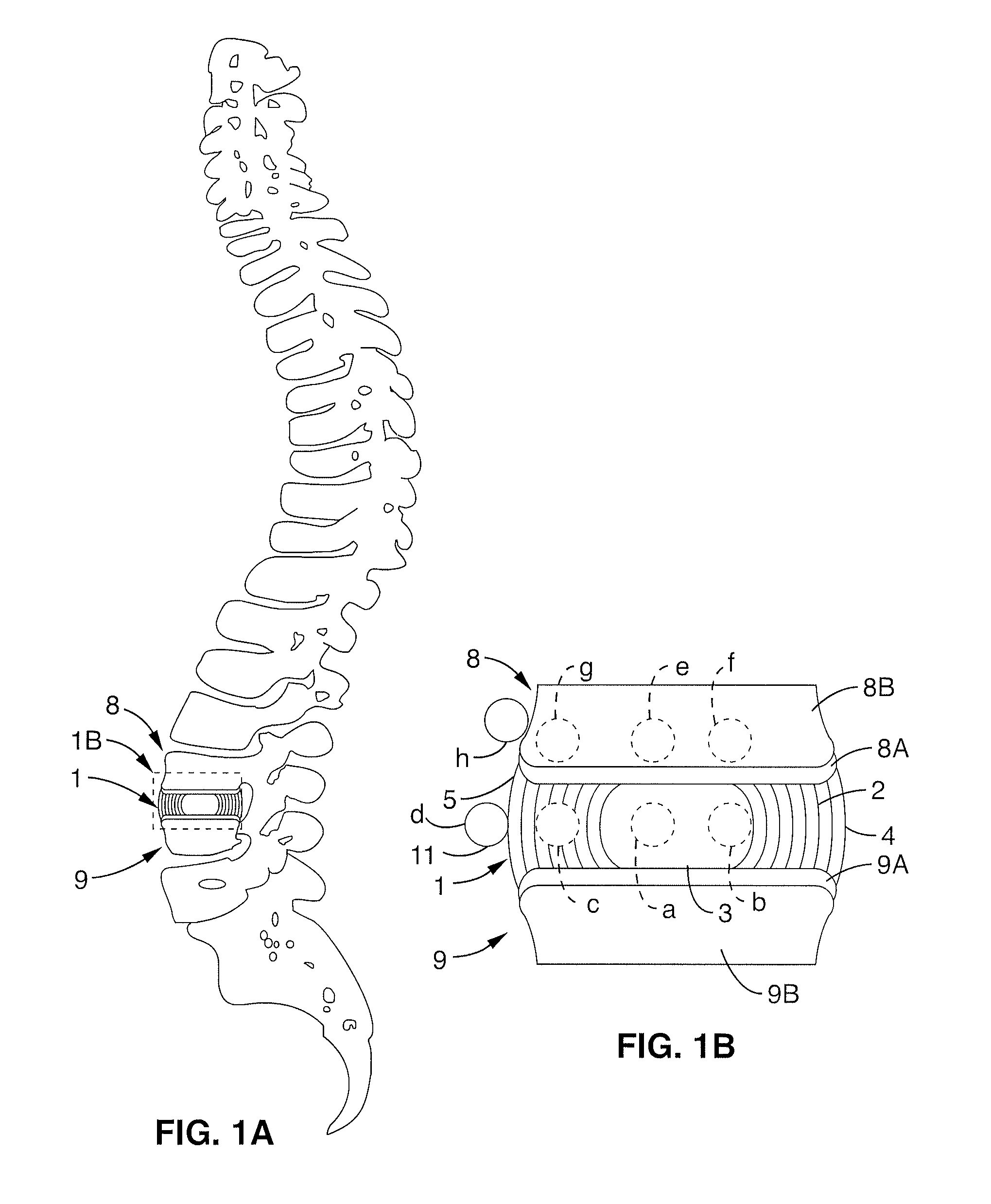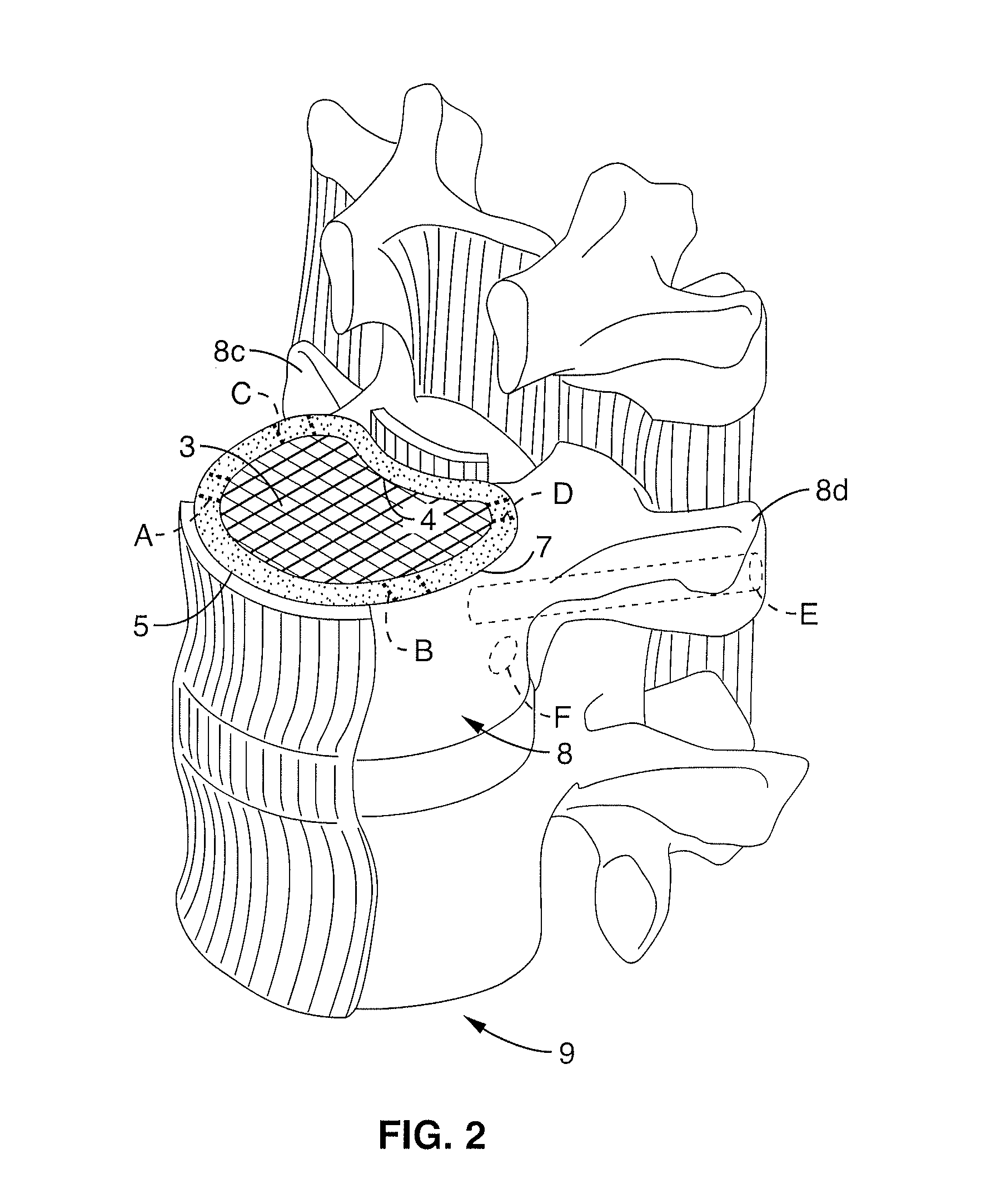In any event, because of the pronounced effects observed from tissue
energy delivery, it is often desired to control and accurately select the localization of tissue / energy interaction in order to treat only the intended tissue, else normal surrounding tissue is effected with harmful results.
High temperature exposures (50+F.° C.) are generally believed to produce rather lethal and immediate irreversible denaturation and conformational changes in cellular and structural proteins in various tissues, thereby thermally coagulating such tissues.
Chronic
low back pain is a significant health and economic problem in the United States, being the most costly form of disability in the
industrial setting.
Traditionally, patients who fail conservative therapy have few
treatment options beside
discectomy or fusion, either of which can result in significant morbidity and variable outcomes.
However, the long-term benefits of this treatment have been questioned since the collagenous tissue may re-lengthen over time.
While these results have been considered by some to be promising, prospective
placebo-controlled trials are lacking, and the therapeutic mechanisms of
thermal therapy are unknown.
However, given that the annular architecture of intervertebral discs is quite different from these other tissues it is has not been previously made clear that prior results can be directly extrapolated to the
intervertebral disc.
Chronic lower
back pain (e.g. discogenic
lumbar pain) and related
motor nerve deficit is typically due to damaged or herniated vertebral discs which either directly impinge on surrounding nerves or cause irritating
inflammation.
Therefore locally densified US energy is not achieved selectively within the tissues associated with such disorders invasively within the body.
However, the ability to actually achieve such targeted
energy delivery at highly localized tissue regions associated with such discs, and to accurately control
tissue temperature to achieve desired results, without substantially affecting surrounding tissues has not been yet confirmed or taught.
However, despite the many benefits of temporary devices and their acutely delivered treatments, a single treatment or a contemporaneous series of discrete treatments in those previous examples may not provide adequate results in many cases.
In one regard, the ability to treat many chronic ailments is limited in the setting of an acute invasion into the body required by temporary devices.
Therefore, it may be necessary to repeat the treatment at a later date if a
single application is not sufficient for the ailment.
Typically, these permanent implants are intended for indefinite periods and associated with chronic conditions ameliorated or diminished by the
permanent implant, but typically not cured upon removal of the
permanent implant.
As such, they are not generally intended to be removed, though often may require removal, such as for replacement due to limitation of the lifespan of the
implant itself, or for example changing condition of the patient.
Notwithstanding substantial benefits gained by many of the long-term implantable devices and chronic therapy methods previously described, each generally has respective limitations and shortcomings concomitant with their specified indications for use and with respect to certain therapies to which they are not generally applicable.
Moreover, the various previously disclosed references do not adequately accommodate the need to control and isolate temperatures if
thermal therapy were to be delivered, which is highly advantageous in particular during
thermal treatment of structures in and around the
spinal cord.
Still further, none of the previous disclosures noted above provide adequate devices and / or methods for controlling long-term thermal therapy of various tissues associated with skeletal joints, again in particular the spine, in order to achieve isolated, desired results such as thermal remodeling of tissue support structures (in particular stressed structures such as collagenous tissues of intervertebral discs), controlled cellular
necrosis (including either in combination with or exclusive of
tissue remodeling), or cellular regeneration or stimulation, or enhanced
drug delivery.
Accordingly, such use of ultrasound is as a diagnostic tool, and generally not therapeutic US energy delivery.
Despite the benefits that such implantable ultrasound devices provide, they are still limited as to the ability to provide a wide variety of important long-term ultrasound therapies via permanent or semi-permanent implantable transducers.
Moreover, other desirable features that are not provided by various of the prior electrical stimulation systems and methods are also not provided by these ultrasound devices and methods.
Moreover, the devices and related noted above lack the ability to provide additional benefits that may be harnessed from controlled, long-term
ultrasound energy delivery into certain tissues in order to achieve a variety of desired tissue responses.
 Login to View More
Login to View More  Login to View More
Login to View More 


